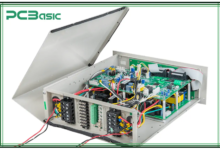Mutf_In: Kota_Flex_Dir_Flo6nw

Mutf_In: Kota_Flex_Dir_Flo6nw represents a significant shift in urban design philosophy. It emphasizes adaptability and efficiency in spatial arrangements. This model allows for multifunctional living spaces that can evolve according to user needs. By promoting flexibility, it addresses contemporary demands for diverse lifestyles. The implications of this approach extend beyond individual residences, hinting at broader changes in urban planning and community dynamics. What remains to be explored is how this flexibility will shape future cities.
The Concept of Flexibility in Urban Design
Flexibility in urban design serves as a foundational principle that enhances adaptability and resilience within urban environments.
Incorporating concepts such as adaptive reuse allows existing structures to be repurposed, promoting sustainability.
Meanwhile, modular spaces provide dynamic environments that can evolve with community needs.
Together, these strategies foster innovative solutions, enabling urban areas to thrive amid changing social and economic landscapes, ultimately granting residents greater freedom.
Key Features of Mutf_In: Kota_Flex_Dir_Flo6nw
Mutf_In: Kota_Flex_Dir_Flo6nw showcases several key features that embody contemporary urban design principles. Notably, its emphasis on urban adaptability allows spaces to transform according to users' needs.
Additionally, the design prioritizes spatial efficiency, maximizing utility without sacrificing aesthetics. Through innovative layouts and multifunctional areas, Mutf_In facilitates a dynamic living environment that resonates with the desire for freedom and flexibility in modern urban settings.
Benefits of Flexible Living Solutions
As urban environments continue to evolve, the adoption of flexible living solutions presents significant advantages for modern inhabitants.
By integrating adaptive spaces and modular living concepts, individuals can personalize their environments to suit diverse lifestyles and needs.
This adaptability not only promotes efficient use of space but also enhances overall well-being, enabling residents to embrace freedom and creativity in their daily lives.
Future Implications for City Planning and Development
The rise of flexible living solutions signals a transformative shift in city planning and development.
By prioritizing sustainable infrastructure and embracing adaptive reuse, urban environments can become more resilient and responsive to changing societal needs.
This approach not only optimizes existing resources but also fosters community engagement, allowing cities to evolve organically while enhancing the quality of life for their inhabitants.
Conclusion
In juxtaposing traditional static living spaces with the dynamic adaptability of Mutf_In: Kota_Flex_Dir_Flo6nw, one sees a shift towards urban environments that reflect the complexities of modern life. While conventional designs often constrain residents to fixed roles, this innovative approach fosters fluidity and personal expression. As cities evolve, embracing such flexible frameworks not only enhances individual well-being but also cultivates vibrant, interconnected communities, ultimately shaping a sustainable future for urban living.






